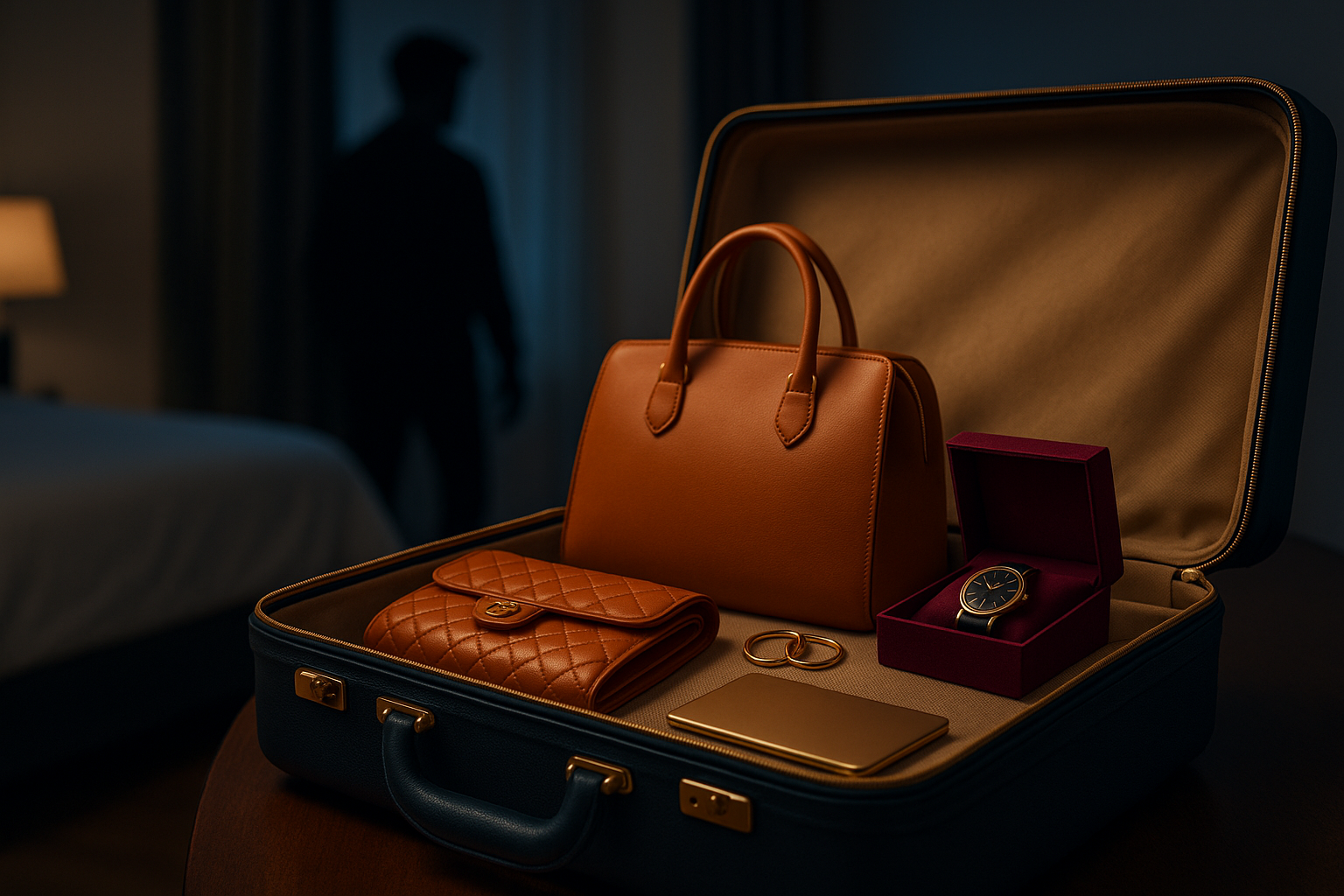
Crime Tourism and Protecting High-Value Assets: What We Learned from the Burrow Burglary
While NFL quarterback Joe Burrow was on the road for a game in December 2024, his Ohio home was quietly—and deliberately—burglarized. The thieves didn’t smash windows or trip alarms. They moved fast, taking more than $300,000 in jewelry, designer luggage, and luxury goods, leaving few immediate clues. According to the FBI, this wasn’t an isolated incident—it was part of a growing trend known as crime tourism.
Organized crews, identified as South American Theft Groups (SATGs), enter the U.S. legally and target high-net-worth homes across the country. They use burner phones, rental vehicles, and fake IDs, often striking when the homeowner is out of town. They focus on portable, high-value items that are easy to grab, conceal, and move—exactly the kinds of assets that often go unprotected once they’re out of a safe or vault.
If you’re a collector, athlete, or public figure, these incidents should hit close to home because this kind of theft isn’t random. It follows a pattern. And the more meaningful and valuable your property, the more prepared you need to be.
That’s where layered protection comes in. Asset monitoring services aren’t just for rare cars or art collections—they’re a way to secure valuables in transit, storage, or use. While no tracker can stop a break-in, devices like ASSURIoT’s IoT tracker can help assure nothing disappears without a trace.
What Is Crime Tourism?
The FBI defines “crime tourism” as a pattern of organized theft carried out by foreign nationals who enter the U.S. legally, operate in mobile crews, and target homes in affluent areas. These groups don’t act randomly. They plan.
They typically scout homes that back onto golf courses, parks, or green spaces. They use second-floor entry points to bypass alarm systems. Once inside, they move quickly, grabbing only what’s small, valuable, and easy to sell: watches, designer bags, jewelry, and luxury tech.
In the Burrow case, the suspects used rental vehicles, burner phones, and fake documents. The stolen goods were routed into organized fencing operations in cities like New York and Los Angeles, where they were packaged for resale.
This is targeted, low-friction theft—and it happens while homeowners are traveling, working, or posting from another city.
If you own high-value goods, the question isn’t just how secure your home is—it’s how traceable your assets are if someone gets past your first layer of defense. That’s where asset monitoring becomes part of the equation.
What Thieves Are Really After
These crews aren’t looking for televisions or furniture. They’re after items that are portable, high-value, and easy to flip—designer luggage, luxury handbags, watches, high-end electronics, and collectible accessories. In the Burrow burglary, the haul included upscale travel gear and jewelry, all of which could be packed into a bag and gone within minutes.
If you own similar pieces, you know how quickly they add up in value—especially when you're traveling or storing them off-site. Most people make the mistake of relying solely on a home alarm or locked closet. But you lose visibility once that bag leaves your property or is moved to a vacation home, vehicle, or storage unit.
That’s precisely the scenario where an IoT tracking device becomes useful. While you can’t attach a tracker to a ring or bracelet, you can discreetly place one in:
- Designer luggage
- Watch or jewelry transport cases
- Locked collectible display trunks
- RVs, vehicles, or safes that hold valuables
Think of it as an extension of protection beyond your home. Tracking movement, setting up geofences, and storing digital records are all part of monitoring high-value assets in the real world—not just on paper.
Why Security Systems Aren’t Enough
A high-quality security system is a must. Motion sensors, camera networks, and smart alerts help deter intruders and capture essential evidence when something goes wrong. For most collectors and homeowners, these systems form the first layer of protection.
But here’s the limitation: They only work while the item is still inside your property.
The moment a thief grabs your designer luggage, watch case, or portable valuables and walks out the door, your cameras are futile. The alarm might go off, but unless someone intervenes immediately, the asset is gone. With organized theft groups, resale networks move fast—often within hours.
That’s the gap that asset monitoring and GPS tracking are designed to close.
Tools like the ASSURIoT IoT tracker extend your visibility past the breach. If an item is moved unexpectedly—especially off-site or while you're traveling—you can receive real-time location updates, trigger geofence alerts, and track movement across networks. You also have access to a secure digital record of what was taken and when, which can help with recovery, insurance claims, or law enforcement coordination.
Security systems protect the space. Asset monitoring protects the item.
Smart collectors use both.
Prevention Strategies: What You Can Do Today
You can’t control when you’re targeted—but you can control how prepared you are. These theft crews look for soft spots: open travel schedules, unmonitored valuables, and homes that look empty. Layered protection is what separates easy targets from smart ones.
Here are steps you can take now to reduce your risk:
- Don’t post your travel plans. Avoid broadcasting when your home will be empty.
- Secure second-floor entry points. Many break-ins happen from the rear or upper levels of a home.
- Store valuables in cases that can be monitored. If you're using luggage, gun cases, or display trunks, insert a tracker discreetly.
- Use a dedicated IoT tracking device. Track assets in motion, especially during trips or off-site storage.
- Create a digital record of what you own. Use the ASSURIoT App to catalog assets for insurance—photos, serials, values, and storage locations.
- Set geofences and alerts. Receive immediate notifications if something moves when it shouldn’t.
This isn't about paranoia. It's about preparation. The faster you detect movement or provide asset data, the more likely it is you'll recover what’s yours—or prevent the loss entirely.
Why ASSURIoT Works for Portable Luxury Items
ASSURIoT isn’t designed to track a bracelet or ring. That’s not realistic, and it’s not how most theft happens. What ASSURIoT does exceptionally well is monitor the bags, cases, and vehicles those high-value items are stored in—especially when they’re in motion.
That makes it a smart layer of protection for:
- Designer luggage holding watches, jewelry, or rare accessories
- Hard cases used for transporting collectibles
- Safes placed inside RVs or sport vehicles
- Display trunks stored off-site or in a garage
- Valuables moved between homes or vacation properties
ASSURIoT’s IoT tracking devices connect across GPS, cellular, Wi-Fi, Bluetooth, and NFC networks. You get near real-time location updates, movement alerts, and a four-year battery that doesn’t require frequent charging. Through the ASSURIoT app, you also gain access to encrypted digital records—useful for ownership, insurance, and recovery documentation.
It’s a reliable tool for high-value asset tracking that doesn’t depend on luck or assumptions. If you travel often, store luxury items off-site, or split time between residences, this device is one layer of security you control—no matter where your assets go.
Final Word: Know the Pattern, Break the Risk
What happened at Burrow’s home in December 2024 wasn’t random. It was planned, efficient, and part of a repeatable method that’s now appearing in cities across the U.S. These groups work quickly, know what to look for, and count on victims being unprepared.
You can’t stop someone from targeting your home. But you can assure your most valuable assets don’t vanish without a trace.
ASSURIoT exists for exactly this type of risk—where traditional systems stop and asset monitoring needs to begin. Combining smart tracking, location alerts, and secure documentation gives you the visibility and control that high-end security systems alone can’t offer.
This isn’t about fear—it’s about readiness. The threat is real. So is the solution.

